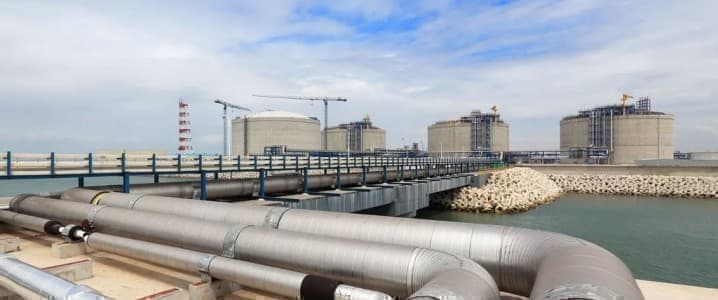The European Union has accumulated record amounts of natural gas in its storage facilities and has done so ahead of its own schedule.
The news about the advanced fill-up of storage caverns was first announced in August by Brussels with understandable pride. In mid-August, storage was full at 90%, which was the November target.
But energy suppliers did not stop there because, as of early October, gas storage in the EU is close to 100% full. There is just one slight problem: it might still not be enough to secure winter gas supply.
Last year, European countries saw a milder-than-usual winter for most of the heating season, which was a welcome manifestation of climate change given the concerns about the sufficiency of gas in storage. In the end, much of the gas bought at exorbitant prices during the summer remained in storage unused because of the weather.
Even with the mild winter and the full storage, however, European governments imposed energy austerity measures on large consumers. This year will be no different. Storage may be full to the brim, but there will be energy savings initiatives—including mandatory ones—recently voted in Germany. Because one thing that commentators often forget when they talk about European gas storage is that it does not cover 100% of consumption.
The storage capacity for natural gas in the European Union actually covers about a third of demand, according to the EU itself. There is space to store up to 100 billion cubic meters of natural gas in the bloc and that is 33% of what it consumes—far from enough if we are talking about supply security. Related: Maduro’s Sabre Rattling Reignites The Venezuela-Guyana Border Dispute
Because storage can only cover a third of European consumption—or perhaps a little more if we assume energy austerity measures will work as well this year as they did last year—European countries will need to continue importing liquefied natural gas through the winter. Unless, of course, Europe gets lucky with climate change again and has another unusually warm winter.
European officials have been busy this past year to find ways to enhance gas supply security. There was the agreement for joint gas buying, which seems to be working so well Brussels is considering making it a permanent fixture of EU life. There were talks about buying more gas from Azerbaijan, but that kind of fell through after the latest events in Nagorno-Karabakh.
Meanwhile, demand for gas in the European Union has declined by between 10% and 15% over the past 12 months thanks to government efforts—and prices. According to Reuters’s John Kemp, there is little chance for a recovery in demand given that it has remained subdued this year as well, despite greater supply security.
Just how vulnerable Europe’s supply of gas is was demonstrated recently by price movements amid the labor dispute at Chevron’s Gorgon and Wheatstone LNG projects in Australia. Europe is not a big buyer of Australian LNG, but Australia is the world’s largest exporter and any disruption in Australian supply disrupts global supply.
So, when workers at the Chevron projects began striking, prices for gas in Europe surged, adding 13% in a single day. In fairness, they are still nowhere near where they were in the summer of 2022, but a 13% daily price rise is still considerable.
Interestingly, prices are currently higher than they were when the Chevron workers started striking in September. Then, the first day of striking saw Europe’s benchmark TTF price rise to 34.50 euro per megawatt-hour. Now, the front-month TTF contract, per Reuters, is trading at 38 euro per MWh, while the January delivery contract is trading at 44 euro.
This is the price of reliance on a global market for liquefied natural gas that, as we saw last year, can quite easily turn into a sellers’ market whatever plans buyers might have, including a buyers’ cartel. Last year, Europe priced poorer countries out of the market, pushing them back to coal. Yet, while this might be dubious from a climate change fighting perspective, it was the natural thing to do for Europe: secure energy supply.
This year, Europe appears to be content in the knowledge its gas storage caverns are full, and with average seasonal drawdowns at less than 600 TWh, the chances of a shortage are slim. Of course, there is also the lower energy consumption by industrial users, which may be positive for gas storage levels but is negative from an economic growth perspective, yet it is not drawing much attention, at least from European officials.
Commentators do pay attention, however. In a September column about the reduction in industrial gas consumption, Reuters’ Kemp spelled it out quite simply. Noting the significant reduction in consumption, which has enhanced supply security for the winter months, he went on to write that “the region has paid a high price in terms of reduced manufacturing activity, which could lead to permanent deindustrialization unless gas prices are reduced significantly within the next couple of years.”
By Irina Slav for Oilprice.com
More Top Reads From Oilprice.com:
- OPEC Hikes Oil Demand Forecast To 116 Million Bpd In 2045
- Oil Prices Soar After Hamas Attacks Israel
- Chevron Shuts Down Israeli Natural Gas Field After Hamas Attack


















